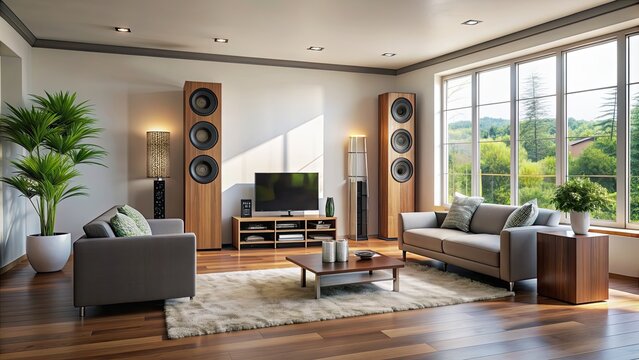Stereo system speakers have been the backbone of high-fidelity sound reproduction for decades, evolving alongside both technological advancements and shifting consumer preferences. From the bulky, floor-standing units of the 1970s to the sleek, compact designs of today, stereo speakers have experienced a profound transformation. But as we look toward the future, the next generation of speakers is poised to be far more than just a tool for listening to music. In this article, we will explore how home audio systems have evolved, their role in modern audio ecosystems, and the innovative technologies that promise to shape the future of sound reproduction.
A Brief History of Stereo System Speakers
Stereo sound, as we know it today, was born in the early 20th century, but it wasn’t until the 1950s that commercial stereo systems became available. The evolution of stereo speakers parallels the progress of recording technology and sound engineering. Early designs featured large, bulky cabinets, often made of wood, and were intended for home use in living rooms or dedicated listening spaces. They prioritized sound accuracy, with less concern for portability or aesthetic appeal.
The introduction of more affordable, smaller speakers in the 1980s and 1990s marked a pivotal moment. As home audio became more ubiquitous, manufacturers started experimenting with materials such as plastic and metal, making the speakers more lightweight and versatile. Compact bookshelf speakers and subwoofers emerged, offering audiophiles the ability to create their own sound systems without compromising on quality.
With the rise of digital music and streaming platforms, the 21st century has brought with it an entirely new era for stereo speakers. While high-end audiophile systems are still revered for their sound quality, a new class of wireless, Bluetooth-enabled speakers has emerged. These modern devices offer convenience, portability, and a variety of smart features, catering to a new generation of consumers who prioritize ease of use alongside performance.
The Science Behind Stereo Speakers: The Mechanics of Sound
Understanding stereo speakers requires an appreciation of the science of sound itself. At a fundamental level, speakers function by converting electrical signals into sound waves that our ears can perceive. The core components of a typical stereo speaker include:
- Drivers: The part of the speaker that generates sound. Most stereo speakers have at least two drivers—one for the midrange frequencies (often called the “woofer”) and one for high frequencies (the “tweeter”).
- Enclosure (Cabinet): The physical housing of the speaker. The design and material of the enclosure greatly impact sound quality, with wooden cabinets often producing a warmer, more natural tone than plastic or metal ones.
- Crossovers: These electronic components split the incoming audio signal into different frequency ranges, directing them to the appropriate drivers.
Stereo speakers are often designed to produce a wide, balanced frequency response, mimicking the way sound naturally propagates through space. The aim is to create an accurate and immersive listening experience, with crisp highs, rich mids, and powerful lows.
The Rise of Smart Speakers: Convenience Meets Sound Quality
In recent years, the line between traditional stereo speakers and “smart” speakers has blurred. Devices like Amazon Echo, Google Nest Audio, and Apple HomePod have redefined what a stereo system can be. These speakers feature built-in voice assistants, allowing users to control playback, adjust volume, and even access information from the internet—all hands-free.
The convenience of smart speakers has led to their popularity, but this convenience hasn’t come at the expense of sound quality. In fact, many of these devices now feature advanced acoustic technologies designed to optimize sound performance. For example, the Apple HomePod uses an array of seven tweeters, and the Amazon Echo Studio incorporates a 3D soundstage, providing a level of audio fidelity previously associated with much more expensive systems.
